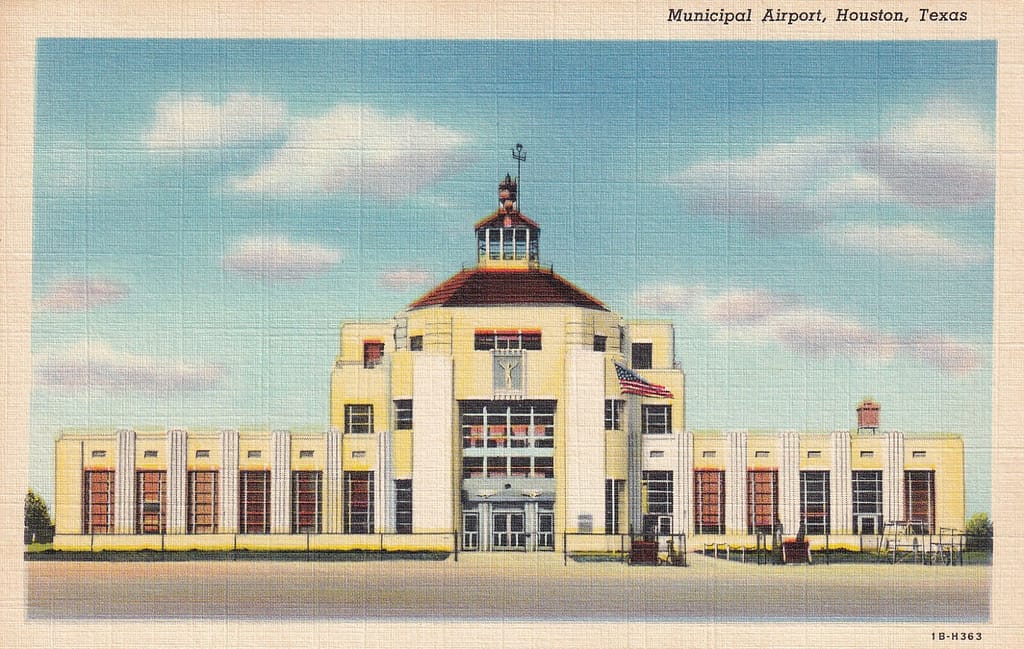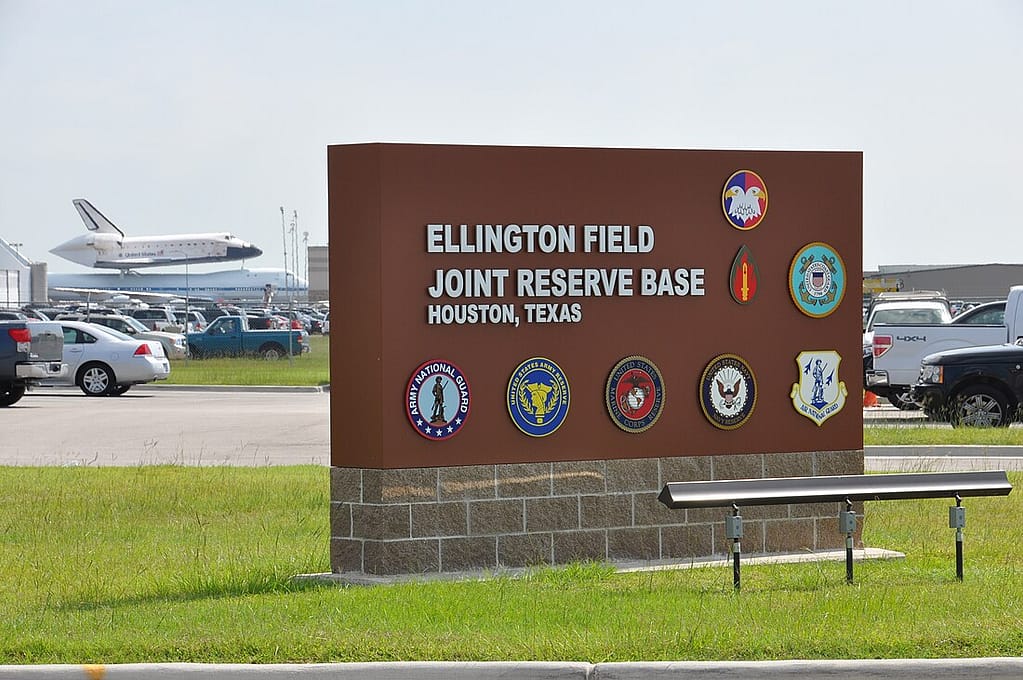
The Early Years: Houston Municipal Airport
Houston’s aviation history began in 1928 with the opening of the Houston Municipal Airport, now known as William P. Hobby Airport. Located just seven miles from downtown, it was the city’s first attempt at creating an international connection. The airport initially served as a hub for airmail and passenger services, making Houston a key link between Texas cities and beyond. By the 1930s, the airport had expanded, accommodating flights from major airlines and facilitating business growth in the region.

During World War II, the airport became an important military training site, underscoring its strategic significance. After the war, commercial aviation boomed, and Houston Municipal Airport emerged as the city’s central air gateway. However, the post-war growth also exposed the need for a larger, more modern facility to meet increasing demand.
The Rise of Intercontinental Travel: George Bush Intercontinental Airport
In the 1960s, the city recognized the need for a more expansive airport to support international travel and regional growth. This led to the construction of Ghttps://www.fly2houston.com/iah/overvieweorge Bush Intercontinental Airport (IAH), which opened in 1969. Located about 23 miles north of downtown, the airport was designed to accommodate long-haul flights, larger aircraft, and international routes, making Houston a global aviation hub.

With five terminals and extensive runways, IAH became home to several major airlines, including Continental Airlines, which made the airport its primary hub. Today, George Bush Intercontinental serves as one of the busiest airports in the United States, connecting travelers to over 170 destinations worldwide. It continues to grow, with ongoing investments in modernizing terminals and expanding runways to keep up with the demand for air travel.

Hobby Airport’s Reinvention: A New Role in the 21st Century
Though it lost its status as the city’s primary airport with the opening of IAH, Hobby Airport found new life by focusing on domestic travel and low-cost carriers. The airport became a hub for Southwest Airlines, which introduced flights to key U.S. cities, revitalizing the airport’s role in the region.

In 2015, Hobby expanded its operations to include international routes with the addition of a new terminal. This change allowed Southwest Airlines to offer flights to Mexico, Central America, and the Caribbean, positioning Hobby as a complementary gateway to IAH. The reinvention of Hobby highlights Houston’s commitment to meeting the diverse needs of travelers, whether flying domestically or internationally.

Ellington Field: A Legacy of Military and Commercial Aviation
Ellington Field, originally established as a military training base in 1917, also plays a key role in Houston’s airport system. Located southeast of the city, it continues to serve military, commercial, and private aviation needs. The field is home to NASA operations, the Texas Air National Guard, and the Coast Guard, reinforcing Houston’s role in both defense and space exploration.

Ellington’s strategic location and versatility make it a critical asset in Houston’s aviation network. The field is also a site for the Houston Spaceport, an ambitious project aiming to position the city at the forefront of commercial space travel. With these developments, Ellington is poised to be a leader in the next generation of aviation and space exploration.

Key Milestones and Future Developments
Houston’s airport system has undergone continuous expansion to keep pace with its growth as a global city. Key milestones include:
- 1969: Opening of George Bush Intercontinental Airport, marking Houston’s entry into global aviation.
- 1987: Continental Airlines establishes IAH as a major hub, increasing the airport’s international reach.
- 2015: Hobby Airport adds an international terminal, enhancing access to Latin America and the Caribbean.
- 2021: Ongoing improvements at IAH, including terminal renovations to enhance passenger experiences.
- Future: Ellington Field’s Houston Spaceport aims to support commercial space travel, signaling the next chapter in aviation innovation.
The future looks bright for Houston’s airport system, with continued investments in sustainability, technology, and infrastructure to meet the growing demand for air travel and space exploration.
Houston’s Airports: A Global Gateway
Today, Houston’s airport system is crucial in connecting Texas to the world. With George Bush Intercontinental handling the majority of international traffic, Hobby serving as a hub for low-cost and regional carriers, and Ellington Field paving the way for space travel, the city’s airports offer comprehensive services for both leisure and business travelers.
Houston’s airports are more than just transportation hubs – they are gateways to economic growth, cultural exchange, and technological innovation. As the city grows, its airport system will remain at the forefront, connecting Houston to the rest of the world for generations to come.